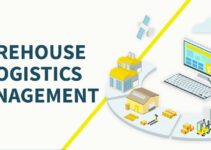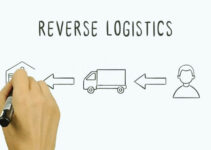Product sourcing is one of the key elements of supply chain management and developing a sourcing strategy makes a significant difference. It comprises segmenting the whole process into various steps like finding the best people, suppliers, and delivery service providers to approach customers and the product. Today, we’ll discuss sourcing in supply chain management; steps involved in the process, benefits, and types.
What is Sourcing in Supply Chain Management?
Sourcing in supply chain management is the method of managing, selecting suppliers, and evaluating the suppliers that would provide you the required supplies to perform various functions of the company. Sourcing is also the activity of procuring products and goods along with other relevant activities like choosing a seller, negotiating contracts, and evaluating the long-term performance of the suppliers.
However, Sourcing also has a great impact on the operations of the company, and developing long-term relationships with other companies in order to gain a competitive edge. Various suppliers affect the operations of the company in various stages like finance, inventory, and quality of goods. However, a well-developed sourcing method would make sure that inventory stock would meet the supply and demand of the company.
However, some of the main functions of sourcing are as follows;
- Acquiring or procuring raw supplies
- In-house performance or decision on outsourcing
- Choosing supplier
- Negotiating contract in terms of RFB (request for bid), RFP (request for proposal), RFQ (request for quote)
- Product design
- Manufacturer collaboration
- Procurement
- Understanding the cost of goods sold
- Inventory turnover or control
- Quality of the product
- Financial impact
- Offshoring or reshoring
Process of Sourcing in SCM – Steps
Some of the main steps involved in the process of sourcing in supply chain management are as follows;
Recognizing Need
In order to find the right product or service, the process starts with comprehending the needs and requirements of your business. It is difficult to comprehend the needs and requirements of your business and know what types of products and services you should procure.
Market Supply
It is significant to comprehend the market supply if you want to source the right product. You should know the answer to the question of whether it is easy or difficult to obtain the product. It is significant to recognize the market demand for the goods that you are procuring.
Developing Sourcing Strategy
Developing a sourcing strategy would help you to become more efficient in the sourcing of your products or goods. You won’t find the best supplier if you are randomly finding products and goods. It is the stage where you should outline your sourcing strategy. Whether you should search online, participate in the tradeshows, or find the right suppliers.
Implementing
As the name implies, you launch your sourcing strategy. If a particular supplier interests you, then you should send the product.
Interacting With Suppliers
Here, you communicate and engage in conversation with potential suppliers. Inquiring the right and relevant questions would give you a lot of useful and beneficial information about the company.
Analyzing Potential Suppliers
It is the stage where you analyze your potential suppliers. It comprises collecting all the relevant information from the suppliers and then analyzing the material. However, it is possible that you would find the two same suppliers, or the one is offering superior quality. You should follow your instinct and select the supplier that offers you the best quality service. Better quality, guarantee, return policy, minimum quantity for order, or the terms of suppliers are some of the things that you should keep in mind.
Agreement Signing & Procuring
You should analyze the supplier, close the deal, and finish the procurement process. It is significant that you should negotiate the terms and conditions, price, and the required quality that you want. You should place your first order with the minimum, test their capabilities and observe how things go.
Benefits of Sourcing in SCM
Some of the main benefits of sourcing in SCM are as follows;
Decreasing Risk Factor
It is significant to develop a strong partnership based on trust and confidence; decrease the risk factor and resolve issues and problems. Both parties should have an honest conversation and put trust and confidence in their capability to rely on one another. Ultimately, it reduces the risk factors for both parties.
Reducing Cost
Sourcing should create a win-win situation for both parties suppliers and buyers. Wholesale procurement allows you to have the best deal at the minimum price. Suppliers could earn revenue because they have access to a good market for their products, and it amplifies their cash flow and future planning.
Stability
While sourcing the raw material supplier, you should develop a connection with them. Clients and suppliers should collaborate and find out the root cause of the problem that would jeopardize both seller and buyer. Reliable and better relationship results in the form of greater efficiency and quality.
Types of Sourcing in SCM
Some of the main types of sourcing in SCM are as follows;
- Global sourcing
- More suppliers
- Virtual enterprise
- Joint venture
- Vertical integration
- Near sourcing
- Insourcing
- Outsourcing
- Low-cost country sourcing
- Captive service operations
Conclusion: Sourcing in Supply Chain Management
After an in-depth study of sourcing in supply chain management; we have realized that sourcing in SCM is highly significant for your business. If you are learning about sourcing in SCM, then you should keep in mind the abovementioned types, benefits, elements, and processes.
Ahsan is an accomplished researcher and has a deep insight in worldly life affairs. He goes Live 3 days a week on various social media platforms. Other than research writing, he’s a very interesting person.


